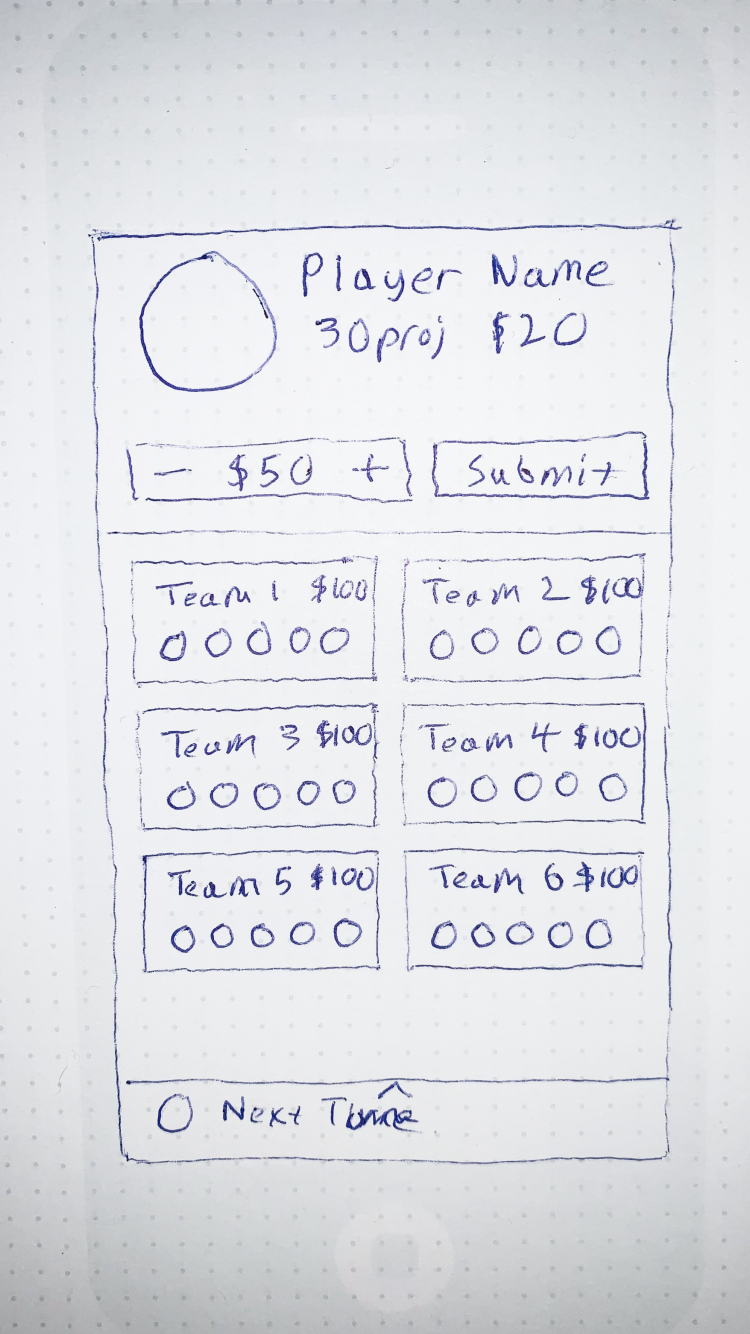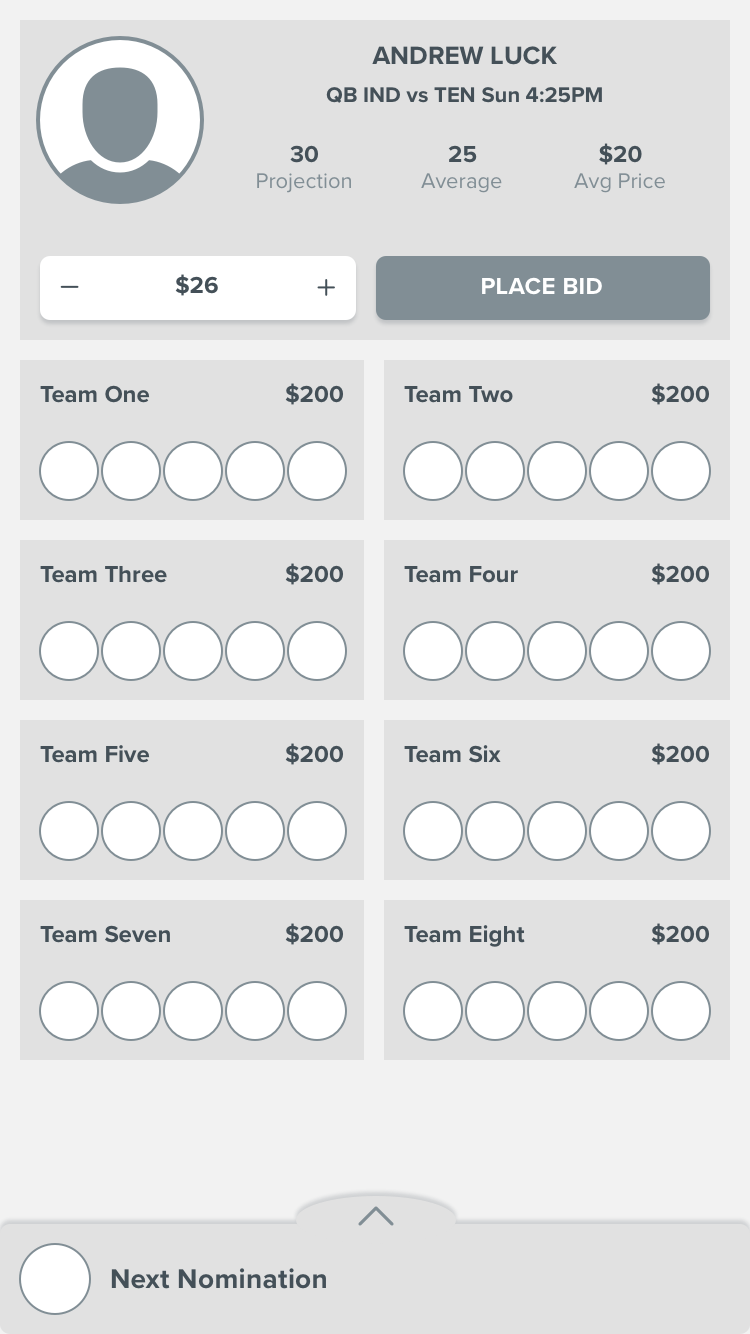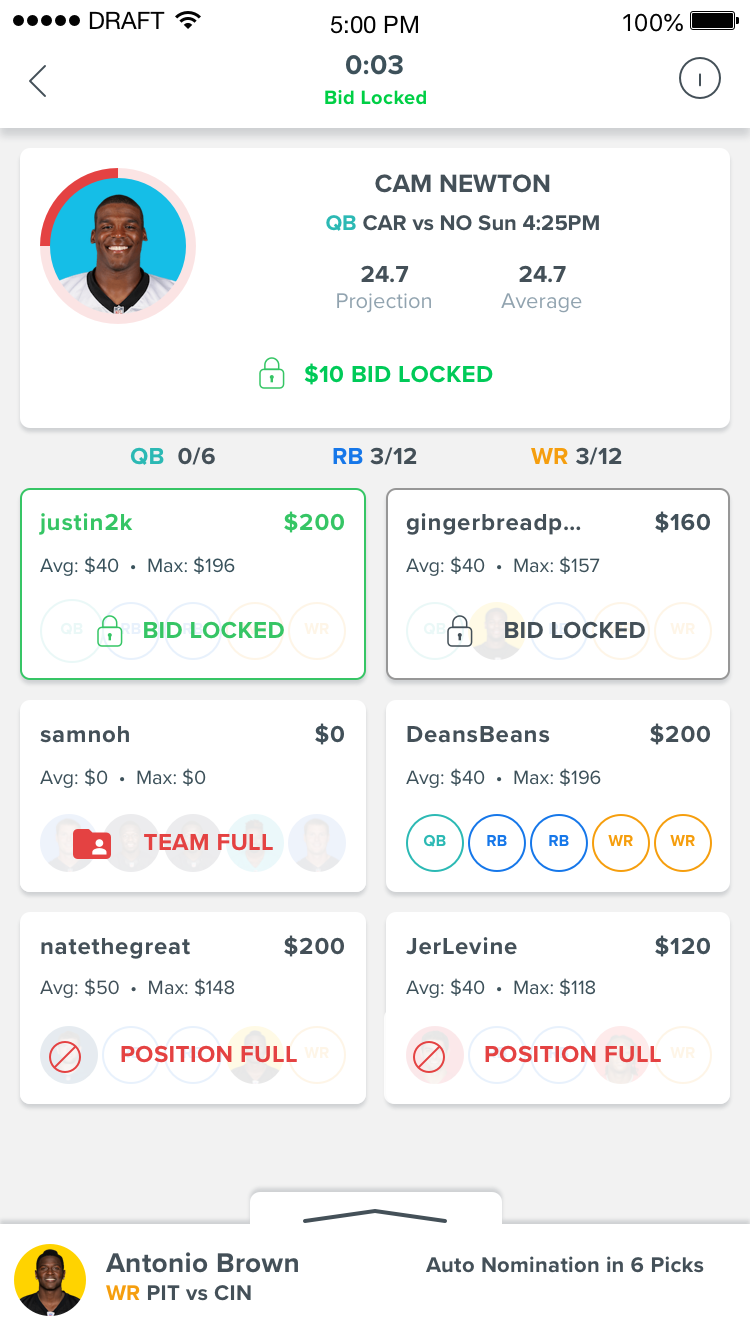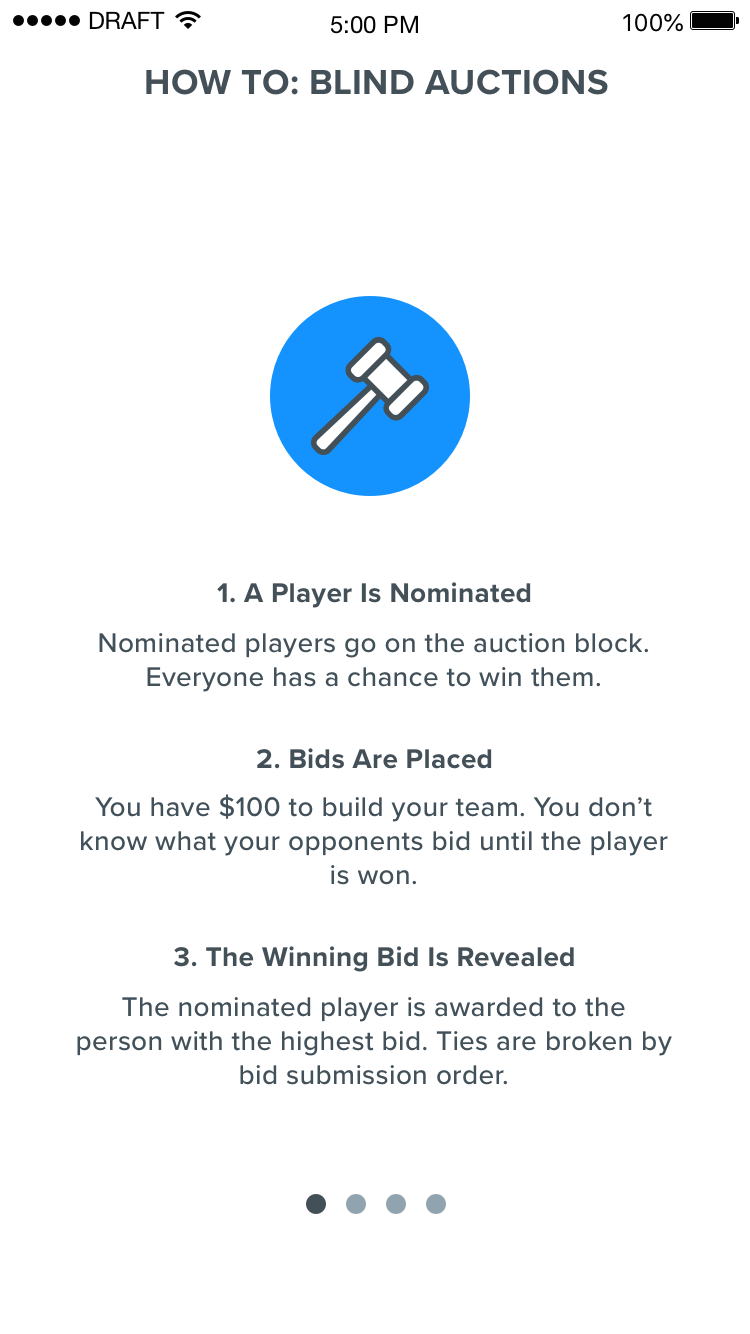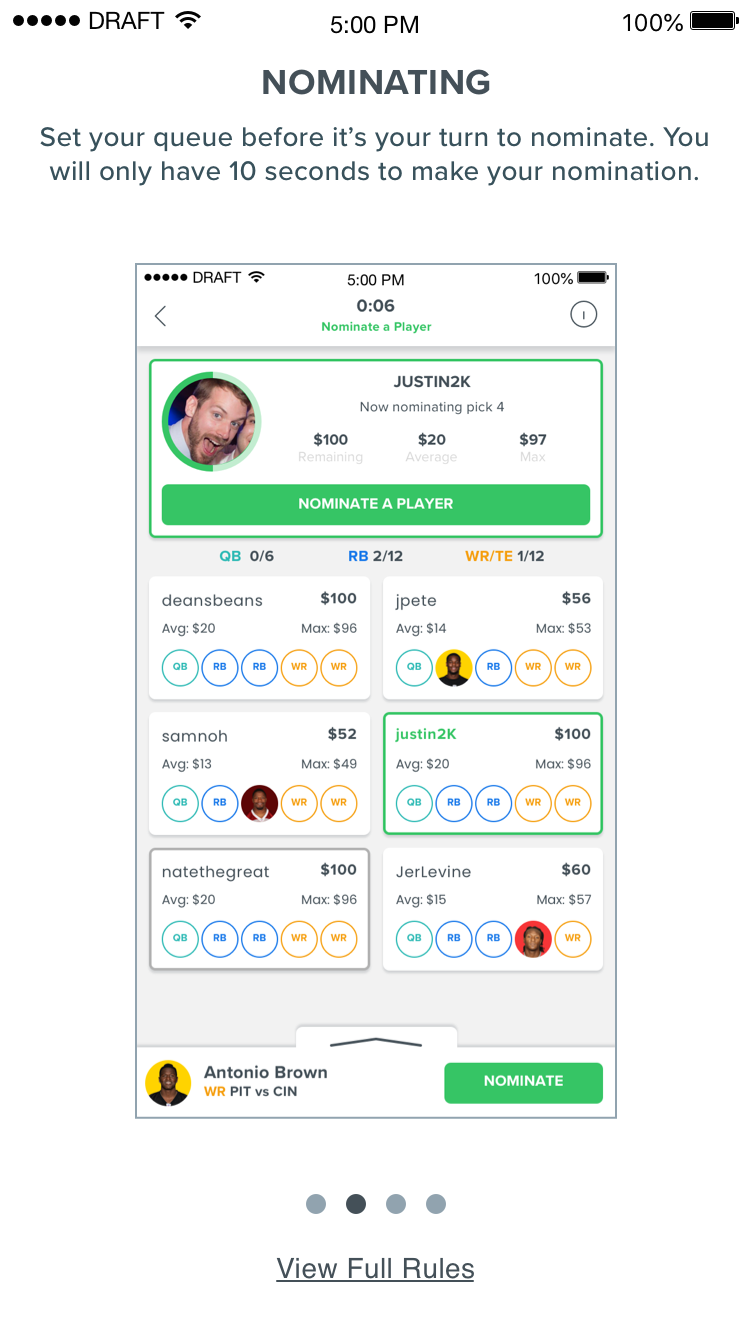
DRAFT: Designing a Blind Auction Game Format
Role: Product Designer
Date: 2018
DRAFT's ethos has always been to offer innovative, fun ways for sports fans to engage in daily fantasy sports (DFS). However after merging with FanDuel in summer 2018, we abandoned our plans to build a salary cap game format that would have competed with their product offering, and opted for a blind auction format for the 2018-19 football season.
In this auction format, contestants have a budget to bid on players, taking turns nominating them. Unlike traditional DFS, a blind auction allows each contestant to place one bid without knowing others' bids. This strategy-driven approach requires careful budgeting to secure desired players without overspending.
Our initial design aimed for a slower-paced game, enabling users to explore available players and track the auction. This approach leveraged our existing snake draft interface, which would save design time while ensuring familiarity for users.
Initial Design Concept
A New Design Direction
However, our CEO and company cofounder, Jeremy, pushed back, and challenged us to create something truly novel, referencing HQ Trivia and asking for something that would be fast-paced, take place essentially within one screen , and make users “sweat.” With that in mind we went back to the drawing board to create a single-screen experience optimized for rapid, continuous action.
As I started low fidelity explorations, I settled on a concept where the header area would display the player up for bid as well as the bidding controls while the bottom two-thirds of the screen would show the team cards for the user and his opponents. The user’s player queue would live in a bottom sheet and when pulled up would leave the bidding area unobscured.
Low Fidelity Explorations
First Design Iteration
When a player is up for bid, a user's default bid is set to $0 and the user has the opportunity to pass on that player, place a max bid, use the arrow buttons to increment the bid up $1 at a time, or tap the bid value field to bring up a keyboard and enter a custom amount. Once a bid is placed, it is locked in and cannot be changed. When it's a user's turn to nominate, he or she can either quick nominate the player at the top of the queue or can select the primary nominate button to open up his or her queue and manually select a player. If the user doesn't make a selection, the system will take the first player in the user's queue and if there are no players in the queue, the system will nominate the player who is projected to score the most points.
Beta Build Screens
User Testing Findings and Design Changes
After internal user testing of our beta build, we identified several key areas for improvement. We needed to educate users on auction draft strategy (e.g., bidding $1 when opponents have filled a position), accelerate the pace of auction drafts without overwhelming users, and enhance visual feedback to help users track the action.
We made several improvements to address this feedback. First, we added a tooltip highlighting keyboard bidding and underlined the bid amount field to indicate interactivity and let users more easily bid a custom amount. We also added temporary status overlays (e.g., "position full," "team full," "bid locked") to team cards to provide crucial context as the draft progressed. Lastly, we included messaging to explain tiebreaker scenarios, informing both winners and losers why they did or didn't win a player.
The UI Updates
Flattening the Curve
After iterating on our core game screens, we realized we still needed to do more to help users master the learning curve associated with blind auction. First, we implemented an onboarding experience for users entering an auction for the first time. Second, we added a carousel of gameplay tips that would display while users were waiting for a draft to fill or load. Our final piece of context was providing an auction recap screen, filterable by position, to let users get a better sense of appropriate price points for players and positions.
Before release, we also implemented some smart gameplay rules to speed auctions along. Once all bids are in, the bidding automatically closes (regardless of time left) and the player is awarded to the highest bidder. Similarly, if a user nominates a player for which only he can bid (for example all other users have already filled that position), the user is automatically awarded the player for the minimum bid. Lastly, we added in a variety of animations, including having the won player’s headshot fly down into the winning user’s team card and a countdown animation, to help visually reinforce to the user what was happening.
How to Play Tutorial
Loading Screen Gameplay Tips
Auction Complete Recap Screens
Results
Blind auction did not become as big as DRAFT’s classic snake draft format, but it generated over $1 million in entry fees from over 46,000 unique users who entered more than 365,000 lineups across more than 72,000 auction drafts over the course of the 2018/19 NFL season. More importantly it complemented our snake draft format without cannibalizing entry fees for that contest type. And perhaps most impressively, this was all accomplished without any paid marketing spend (due to DRAFT’s acquisition by FanDuel). While DRAFT is now shuttered after the FanDuel merger, you can view a prototype of it below for a sense of the live product.




